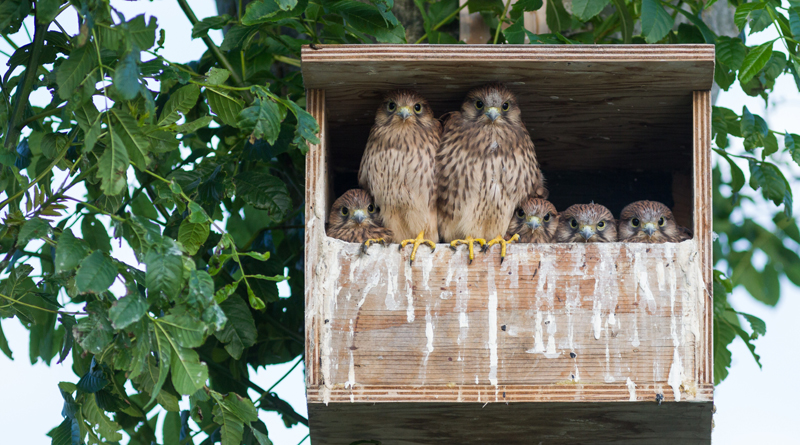BIRD NESTS – Life In The Outdoors

Robins make nests from grass and sometimes a strip of cloth or a piece of string. They line the inside with mud, molded by the female to the shape of her breast. They locate their nests on horizontal branches of trees and on window ledges and other flat surfaces of buildings. I once found a robin’s nest on a fire escape.
Mourning doves make their nests of small sticks. A mourning dove’s nest looks flimsy. Often when there are eggs in a nest they can be seen through the sticks from below. Usually mourning dove nests are on the branches of trees in an open woods but a pair of doves, like robins, occasionally make a nest on some flat surface. One pair of doves made a nest on the tray of a bird feeder I had. It was summer and I wasn’t putting seeds in the feeder. Robins and mourning doves are nesting now. Many probably already have nests with eggs. Some may already have nestlings.
Great horned owls are the first birds to begin nesting in spring. Actually, they don’t begin nesting in spring; they lay their eggs in February and even in January. They don’t build a nest either. They occupy an old nest of some other large bird, a hawk or an eagle.
Once great horned owls have moved in, neither hawk nor eagle can drive them out of a nest. I read of a pair of bald eagles cohabiting with a pair of great horned owls. There was a great horned owl incubating eggs on one side of the nest and an eagle incubating across the nest.
Great horned owls also nest in tree cavities. Since the owls can’t make such cavities, like woodpeckers, these are natural cavities made by weather and rot, or woodpecker holes enlarged by weather and rot. Occasionally great horned owls lay their eggs on stumps or flat rocks.
Baltimore orioles, late spring migrants just recently returned after spending the winter in Central and South America, make a deep pouch of plant fibers, each hanging from a drooping tree branch. Female red-winged blackbirds are making nests of cattails among cattails while male redwings perch on the cattails and branches of trees in a marsh, puff out their epaulettes and call.
Woodpeckers make and nest in holes, of course. Tree swallows, house wrens, bluebirds, black-capped chickadees and white-breasted nuthatches nest in holes, often made by woodpeckers. These birds also use bird houses. Purple martins nest almost exclusively in bird houses, multi-chambered houses. Bank and rough-winged swallows nest in holes in dirt banks. I have often sat on a bank along a river and watched these birds flying in and out below me.
Barn swallows build nests of mud, fastened to the sides of beams in buildings, usually farm buildings. Cliff swallows also use buildings and make nests of mud but make their nests under the eaves on the outside of buildings.
Killdeer lay their eggs on the ground, the nest just a scrape in the dirt or a spread of small stones. Approach a killdeer nest and the adults will flutter away as if with a broken wing, calling loudly, luring you to follow them away from their eggs.
Meadowlarks lay their eggs on the ground in nests woven of grass and partially roofed over. Bobolinks and vesper, Henslow’s and savannah sparrows build nests on the ground in grasslands. Ovenbirds nest on the ground in woods. They are named for their nests which are roofed over.
Some bird nests are cups of mud and grass, others are fragile platforms of sticks. They’re hanging baskets at the end of tree branches. They’re holes chiseled into trees and boxes made by birders. They’re located in trees and on the ground. They’re tunnels in river and excavation pit banks. Look for bird’s nests wherever you see birds.
- Birds As Weather Forecasters – Life In The Outdoors - December 17, 2021
- Rare Bird Spotted In Indiana – Life In The Outdoors - October 8, 2021
- MY EXPERIENCE WITH DEER – Life In The Outdoors - July 30, 2021


